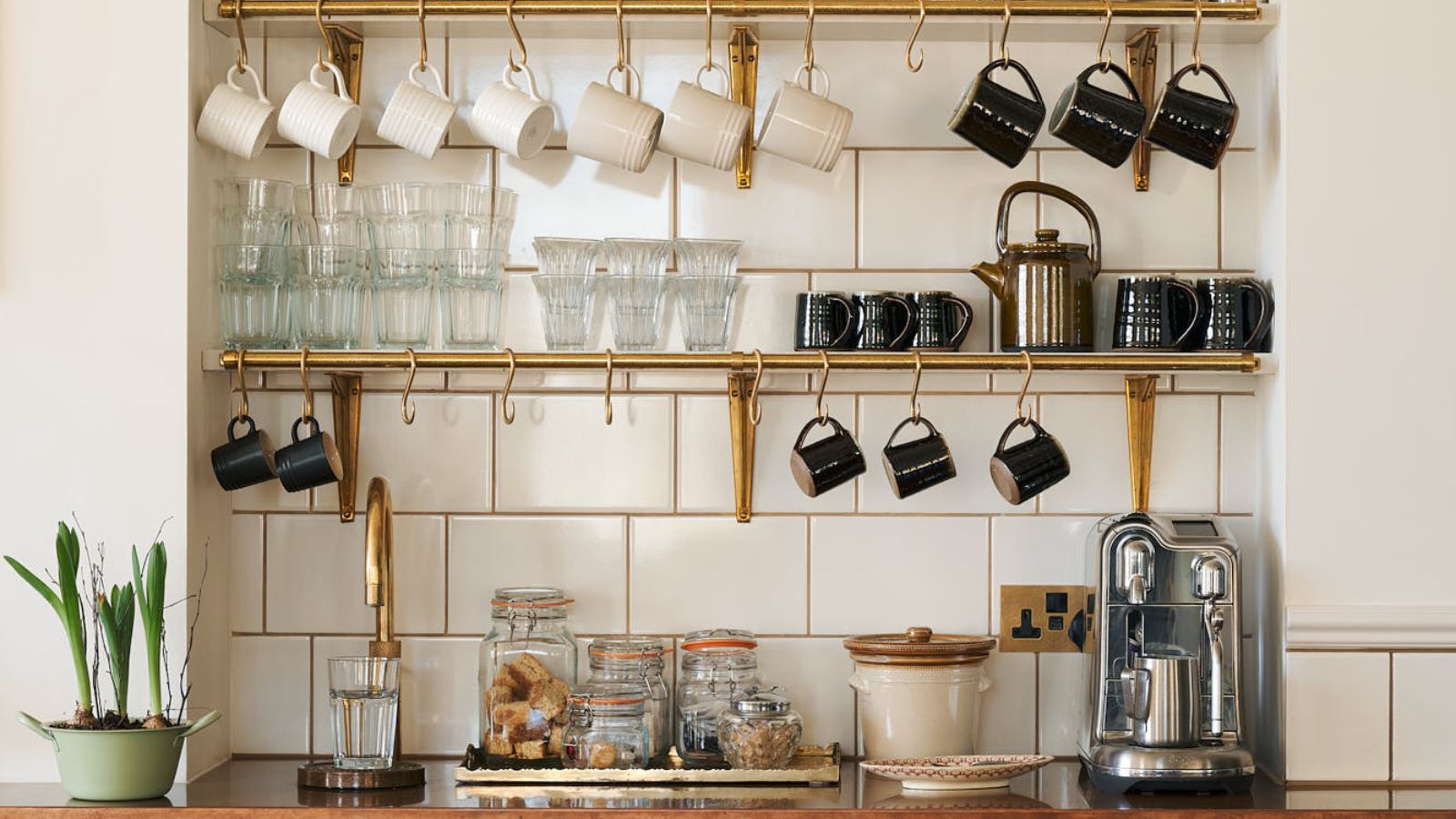How high should my tiled upstand be? Experts reveal the ideal height for every room
Your guide to selecting the perfect height for a tiled upstand in kitchens, bathrooms, and utility rooms – balancing style and practicality
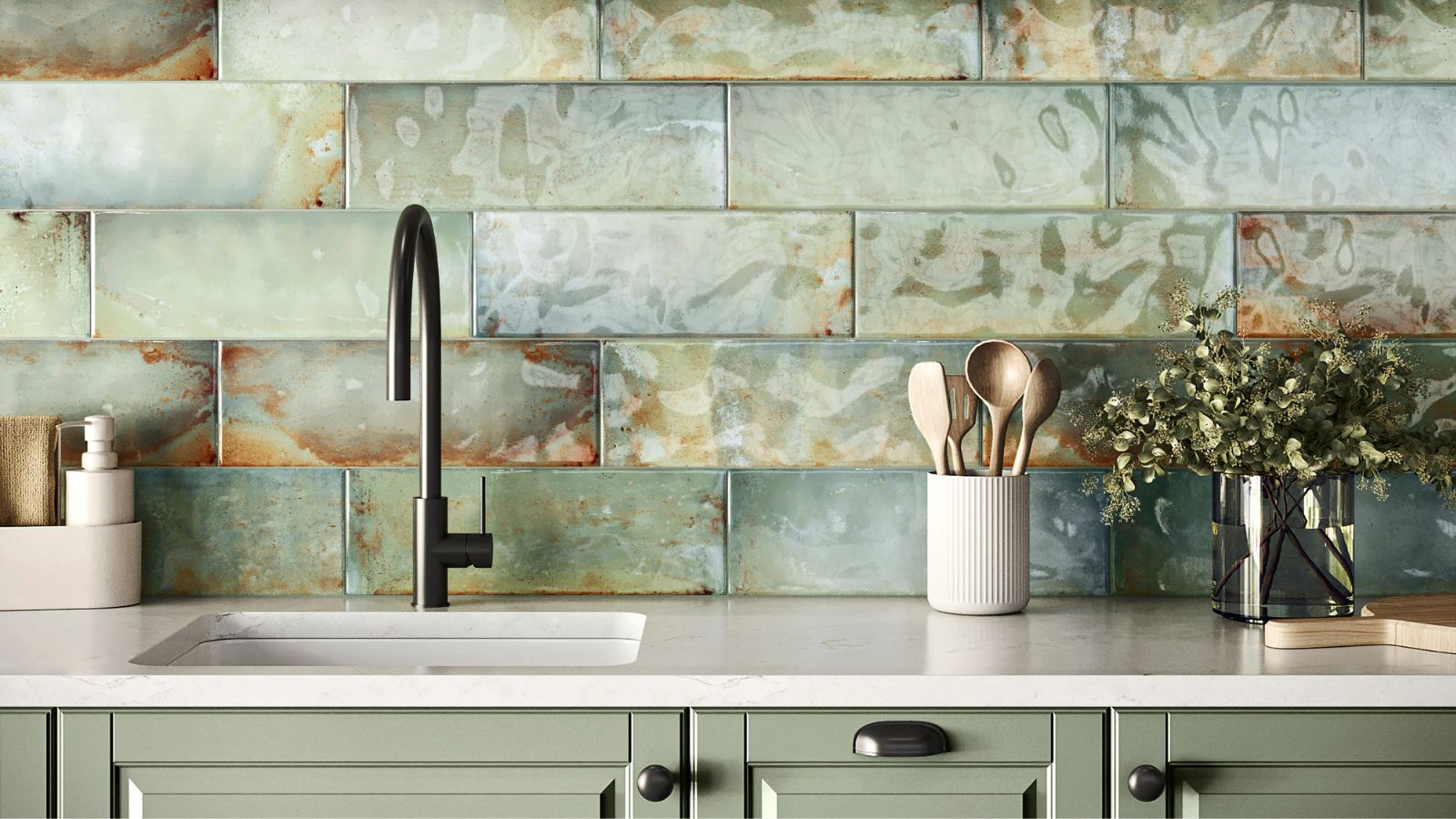
Tiled upstands might not be the first thing you think about when designing a space, but they’re the kind of detail that makes all the difference. Positioned where the countertop meets the wall, they act as a stylish shield, protecting your walls from everyday splashes and spills while adding a polished finishing touch to your interiors.
Whether you’re designing a kitchen, bathroom, or utility room, these features offers a sleek alternative to a full-height backsplash, allowing you to keep moisture in check without overpowering the space. But you may find yourself wondering 'how high should my tiled upstand be?'
The answer depends on your room, your tiles, and your style. To help you get it just right, we’ve tapped into expert advice to explore the perfect height for this essential design feature.
Standard heights for tiled upstands
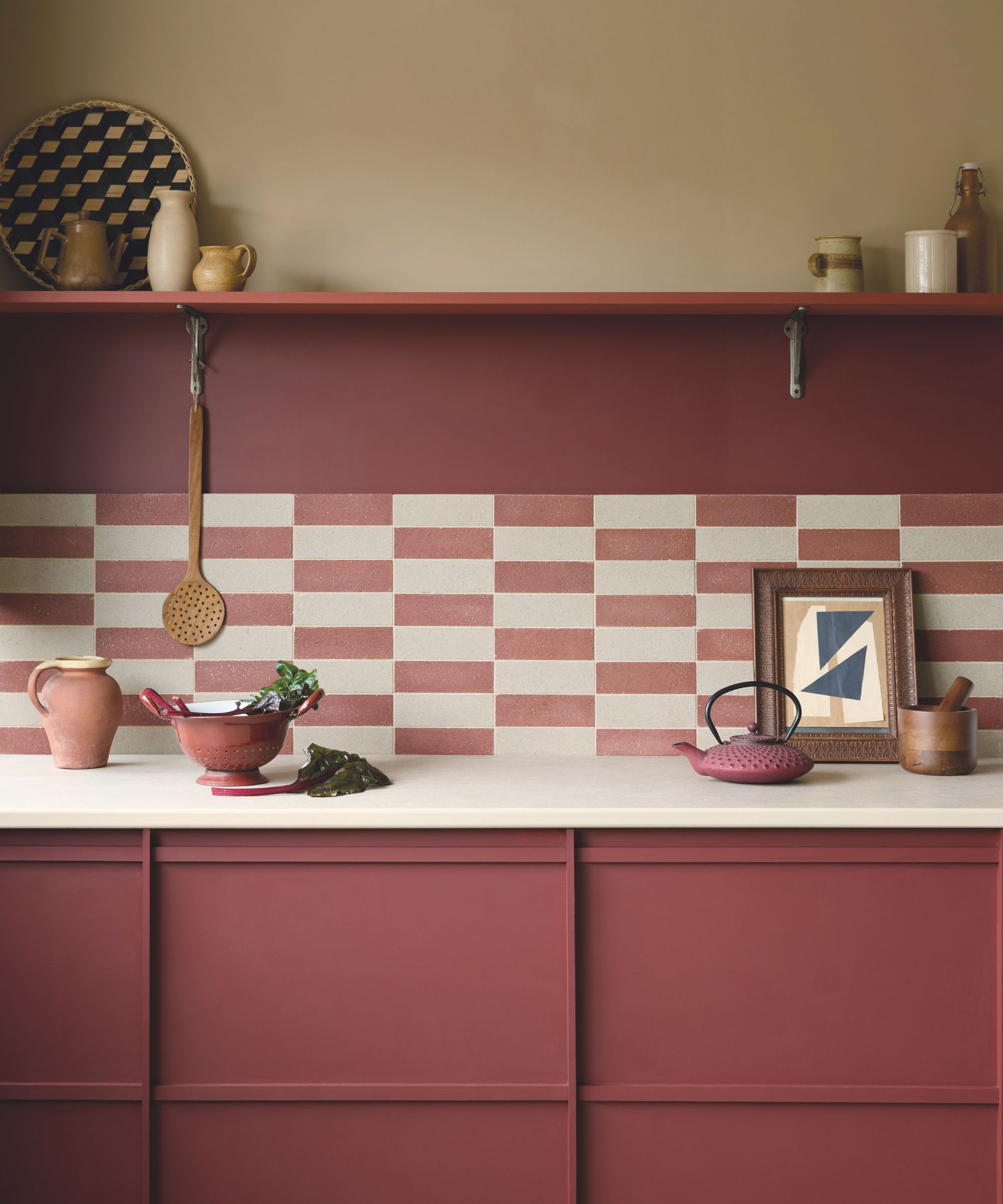
“There is no set rule for the height of a tiled upstand,” explains Rob Whitaker, creative director of Claybrook Studio. “But for practicality, the tiles are there to stop water in most cases, and so it should be at least 25cm to 40cm high to catch the splashes.”

Rob Whitaker is the Creative Director and Co-Founder of Claybrook Studio, a London-based company specialising in innovative tile and bathroom designs. With a background in interior design and a passion for sustainable materials, Rob leads the creative team in developing unique, eco-conscious products that blend functionality with aesthetic appeal.
Upstands in kitchens
When planning your kitchen upstand, height and materials can make all the difference, both practically and aesthetically. Colin Lincoln-Evans, buyer at Tile Mountain, advises keeping it simple: “A kitchen upstand is typically 10–15cm in height. However, for practicality, you may opt for a full-height splashback, particularly behind a hob, to ensure enhanced durability and improve the overall aesthetic.”
In spaces with overhead cupboards, extending the upstand height can create a cleaner, more cohesive look. Rob Whitaker recommends tiling up to the base of overhead cupboards for a cohesive finish, or using trim to ensure the edge of your tiling appears neat and professional.
Bathroom upstands
Bathrooms have unique demands when it comes to upstands, with moisture management being the top priority in these spaces. Colin Lincoln-Evans explains: “Bathrooms tend to benefit from tall or even full-wall tiling, especially around basins, baths, and showers, to manage the higher moisture levels.”
Bring your dream home to life with expert advice, how to guides and design inspiration. Sign up for our newsletter and get two free tickets to a Homebuilding & Renovating Show near you.
For smaller areas like sinks, Rob Whitaker recommends a 30cm height as a practical choice for splash protection. This can also be an opportunity to experiment with design: “In small cloakrooms, consider using something distinctive or eye-catching to brighten up the space.”
Material choice is equally important, as bathroom tiles need to be able to withstand constant moisture. Opt for glazed ceramics, porcelain, or natural stone with a water-resistant finish to ensure durability and ease of maintenance.
Utility room upstands
Utility rooms are hardworking spaces where practicality takes precedence, but that doesn’t mean style should be overlooked. Mid-height upstands of 15 - 30cm are often ideal, offering sufficient splash protection for areas around sinks and worktops without overwhelming these typically compact spaces. Durable materials such as porcelain or ceramic tiles are popular choices, as they are easy to clean and resistant to dirt and water - perfect for busy households.
Utility rooms can also be an opportunity to introduce subtle design features. Mosaic tile sheets or textured finishes can add personality, while coordinating the upstand with adjacent rooms creates a sense of flow and cohesion throughout your home.
Colin Lincoln-Evans is the Head of Buying at Tile Mountain, a leading UK-based tile retailer known for its extensive range of wall and floor tiles.
Design considerations
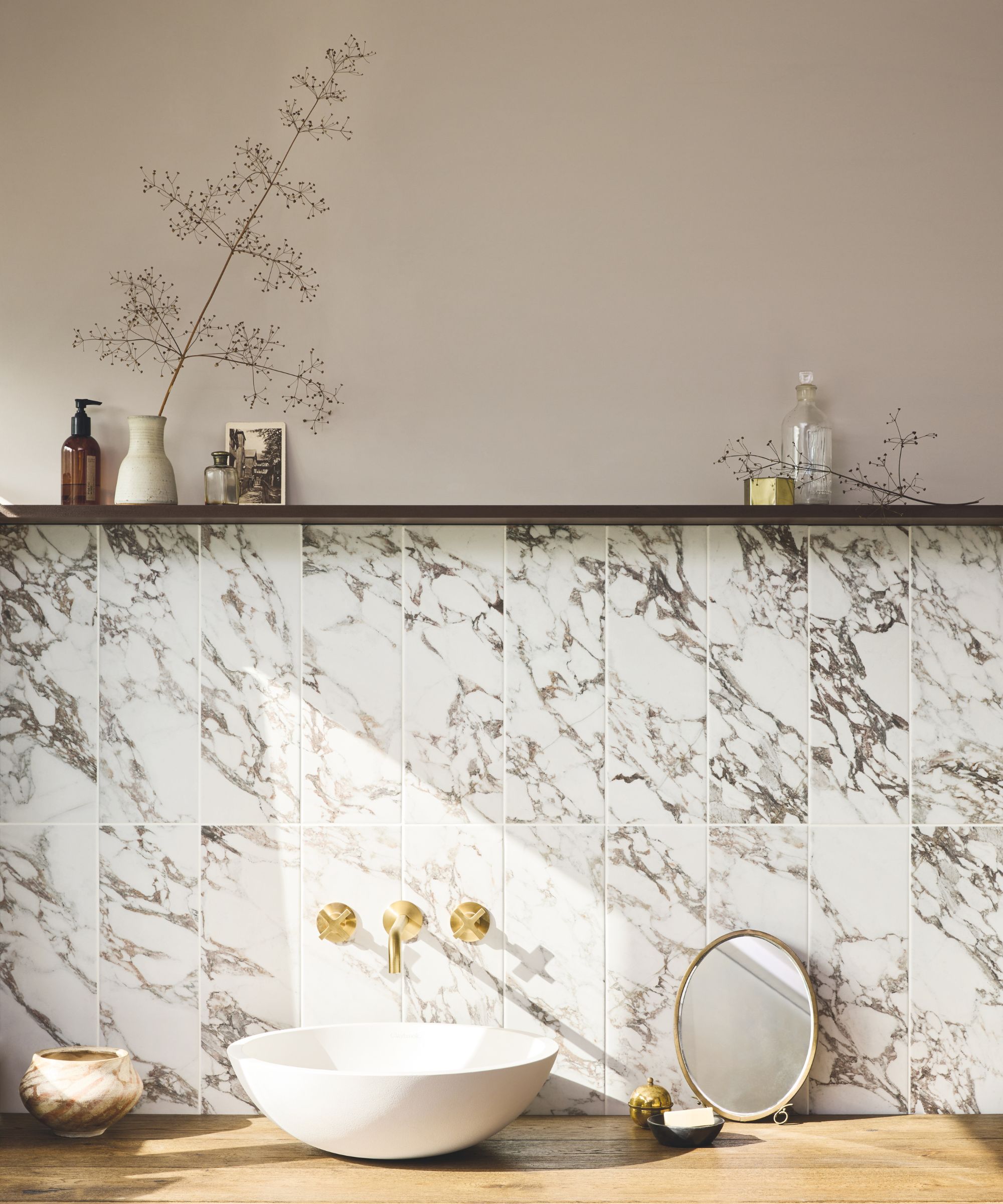
“The height of an upstand has the power to subtly influence the proportions of a room,” explains Colin Lincoln-Evans. “For example, shorter upstands help create a minimalist look and keep walls more prominent; these are ideal for showcasing a specific paint colour, finish, or wallpaper in a bathroom.”
“In compact kitchens and small bathrooms, taller upstands can replace a traditional backsplashes to maximise utility without overwhelming the space," Colin continues. "Tall upstands are also great for making a statement, especially when using patterned or textured tiles. For example, popular Zellige tiles create depth and add visual interest.”
Rob Whitaker offers these practical tips for tile selection: “It may be tempting to use one whole larger format tile, like porcelain, behind a sink to reduce grout lines, but it rarely looks aesthetically pleasing and can seem visually top-heavy. I recommend sticking to smaller tiles, or use a glazed mosaic if you don’t want to be restricted by using whole tiles, as this is often on sheets and can be cut to size.”
The best tiles for a tiled upstand
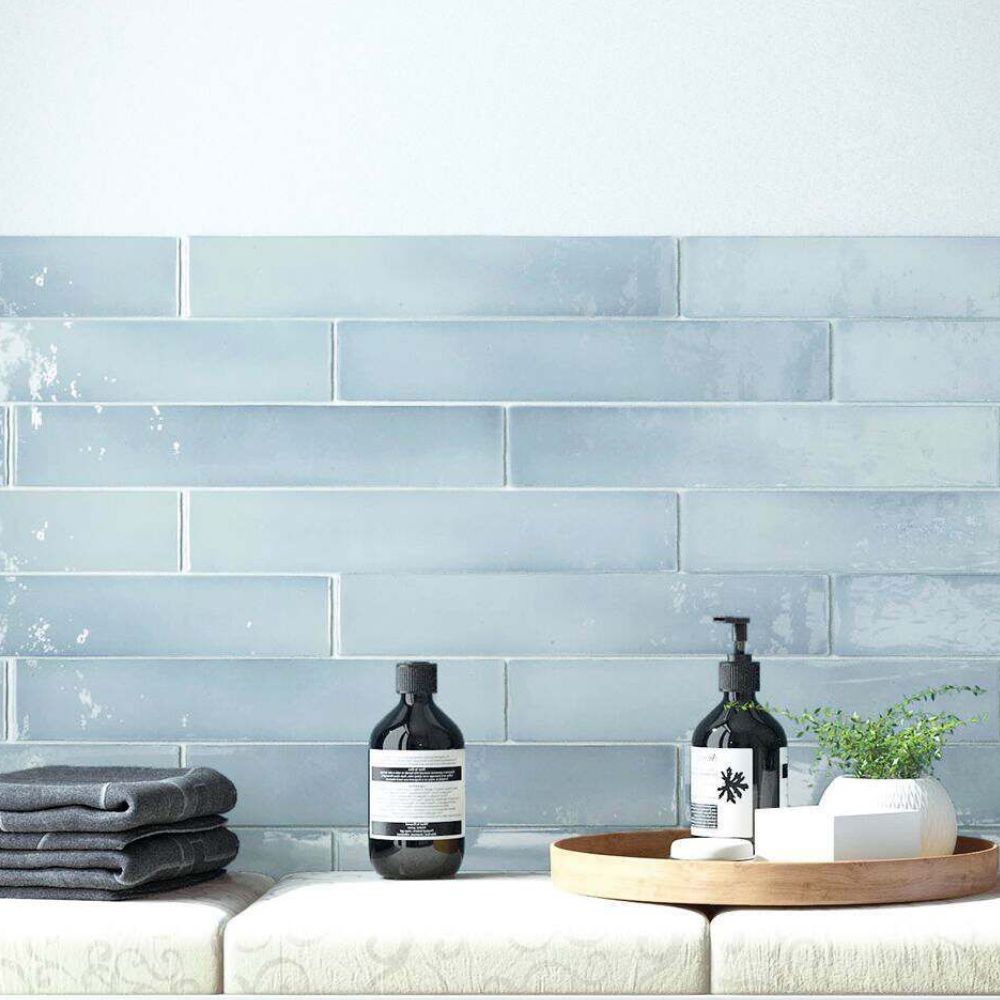
Constructed from hardwearing ceramic, these tiles feature a beautiful deep puddle glaze and high gloss finish.
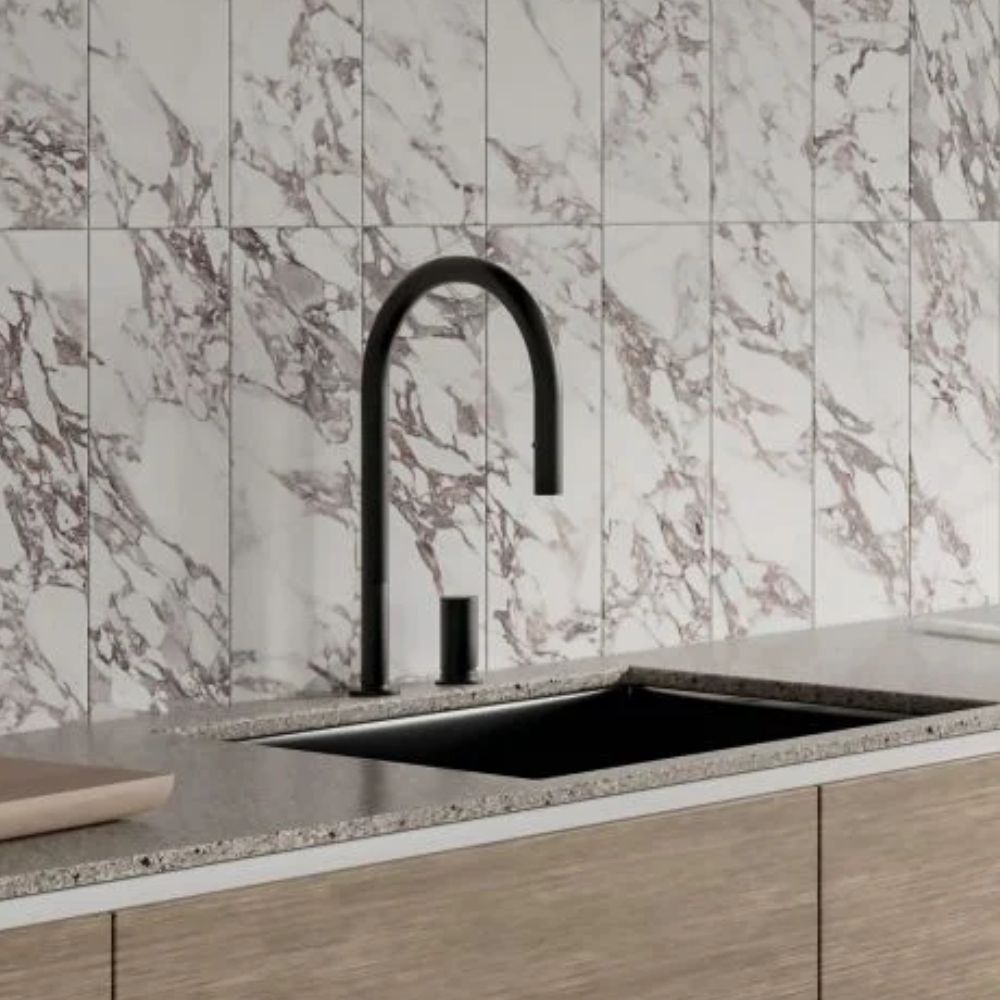
These decorative porcelain tiles have a distinctive twinning of white and deep plum veins against a white background, lovely for bathrooms or kitchens alike.
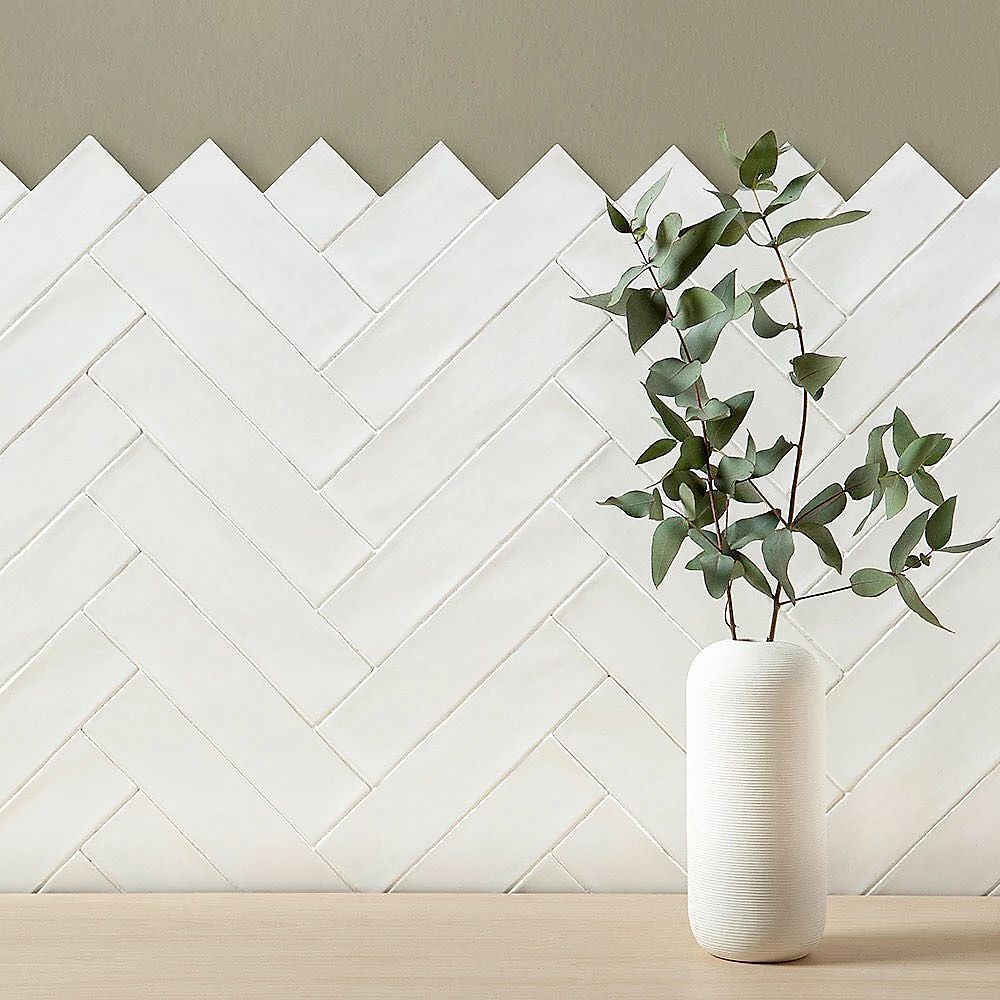
These beautiful flat bumpy metro white tiles come in a classic brick shape and are perfect for minimal upstands.

These glazed ceramic trim tiles in dove white are perfect for finishing a white kitchen or bathroom upstand.
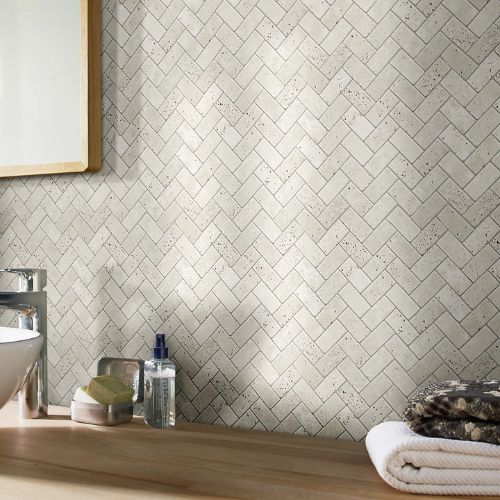
These mosaic tile sheets are ideal for DIY upstands, as they’re flexible, easy to cut, and extremely versatile.
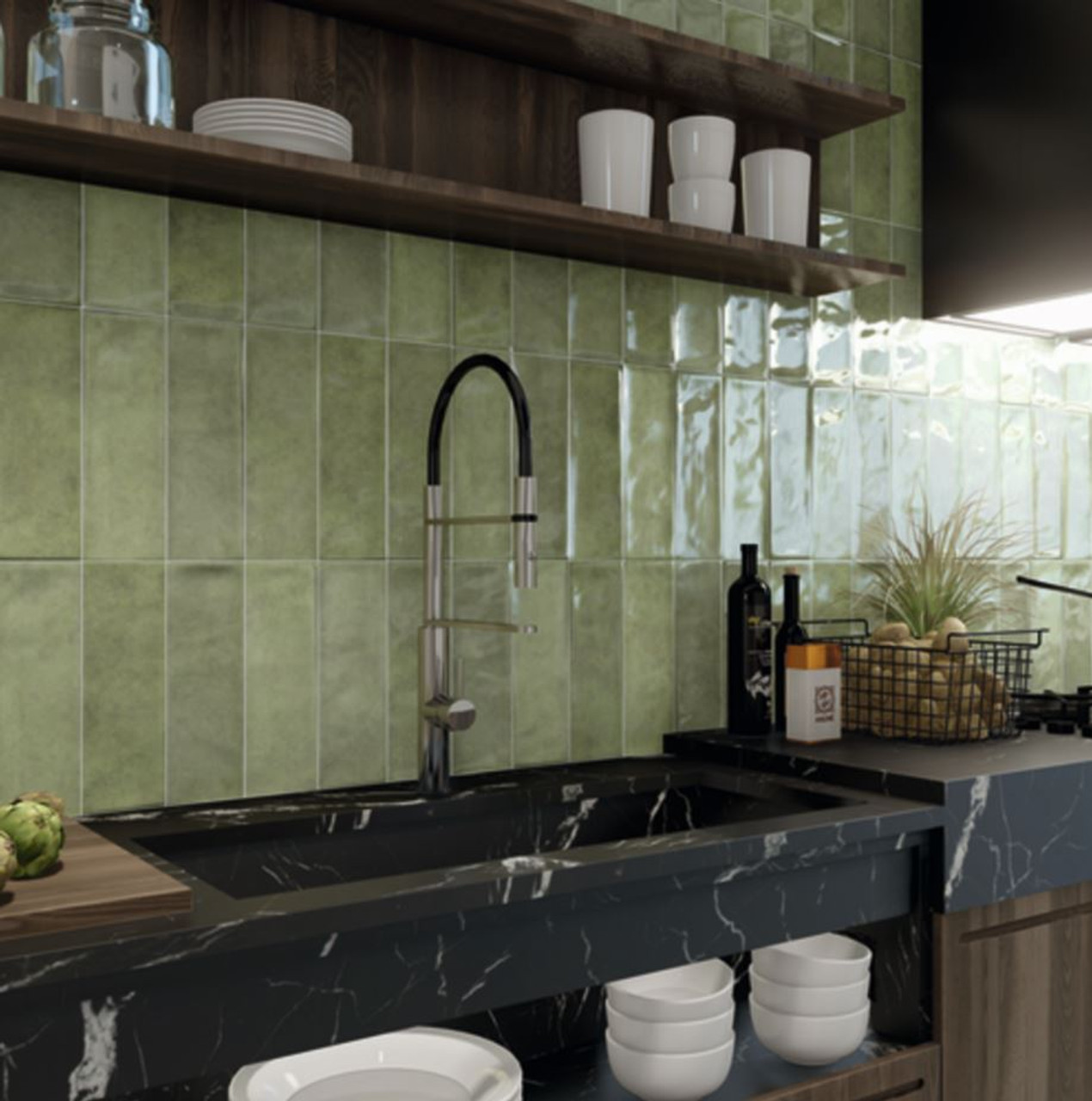
Inspired by handcrafted Moroccan Zellige tiles, these durable ceramic subway tiles add vibrant colour to any space.
Practical considerations
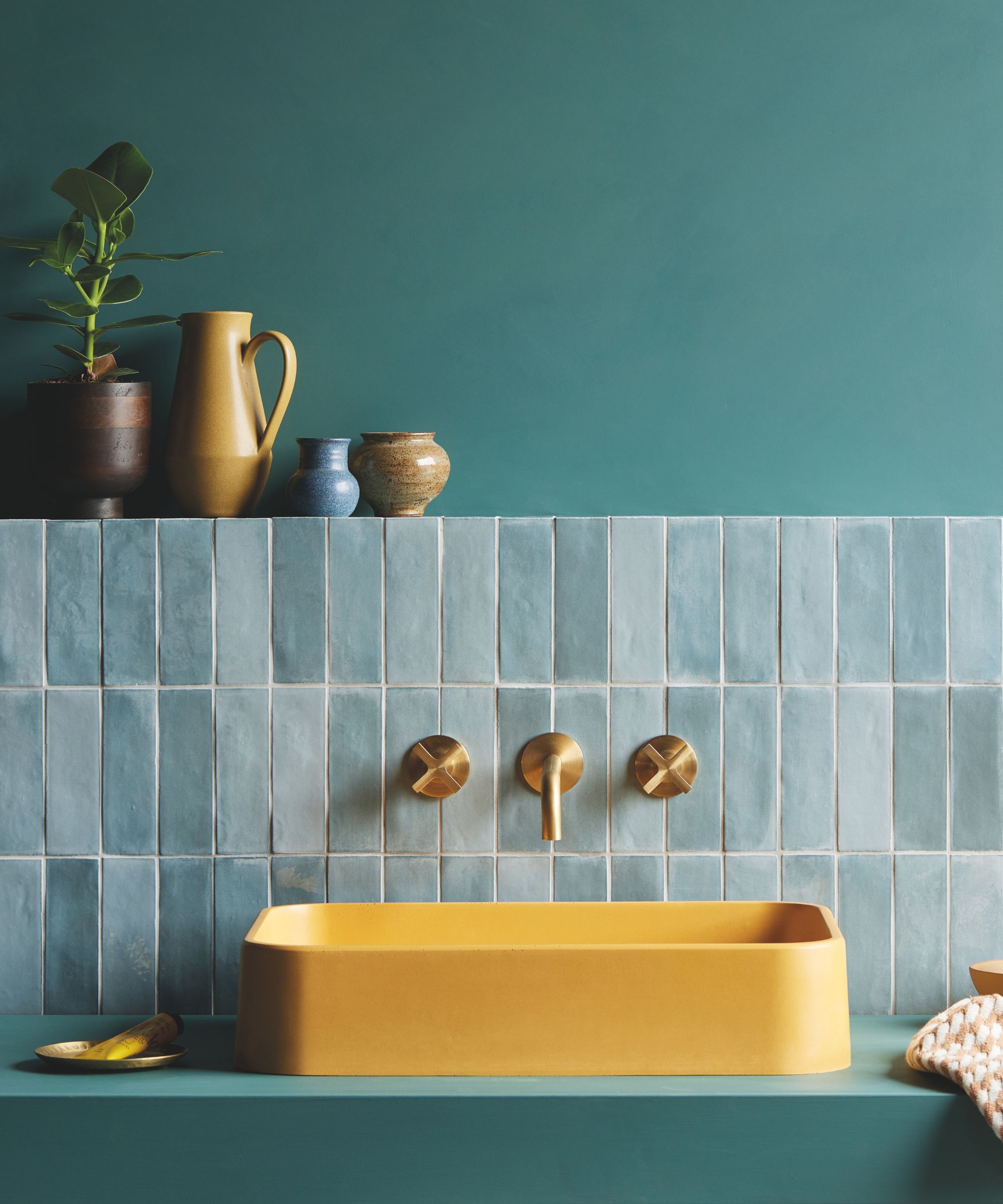
When deciding on the height of your tiled upstand, practicality is just as important as the design. Rob Whitaker highlights the importance of splash protection: “A smaller upstand behind a small sink may look neat but may actually lead to splashes on wallpaper or painted walls. Think about practicality; you may not splash walls, but guests or children might!”
Material choice also matters for spaces with heavy use. “If the space is a little-used area, e.g., a sink in a garage or workspace, and visual beauty is low on the list of requirements, then use a single larger porcelain tile to cover the whole area needing protection. This will be easily wipeable even in high-dirt areas,” explains Rob.
FAQs
What are some alternatives to tiled upstands?
If you’re looking to go beyond traditional tiled upstands, there are plenty of stylish alternatives. Rob Whitaker from Claybrook Studio suggests extending marble or quartz worktops partway up the wall for a seamless, luxurious look, or using mirrored glass to double as splash protection and a reflective design element. In more utilitarian spaces, larger porcelain tiles are a practical, low-maintenance choice, while pairing materials – like stone worktops with decorative tiles above – adds texture and visual contrast.
If you’re ready to elevate your space with a tiled upstand, it’s worth brushing up on the basics of tiling. Check out our guide on how to tile a backsplash for step-by-step instructions, pro tips, and design inspiration to ensure your project is a success from start to finish.

Gabriella is an interiors journalist and has a wealth of experience creating interiors and renovation content. She was Homebuilding & Renovating's former Assistant Editor as well as the former Head of Solved at sister brand Homes & Gardens, where she wrote and edited content addressing key renovation, DIY and interior questions.
She’s spent the past decade crafting copy for interiors publications, award-winning architects, and leading UK homeware brands. She also served as the Content Manager for the ethical homeware brand Nkuku.
Gabriella is a DIY enthusiast and a lover of all things interior design. She has a particular passion for historic buildings and listed properties, and she is currently in the process of renovating a Grade II-listed Victorian coach house in the West Country.
